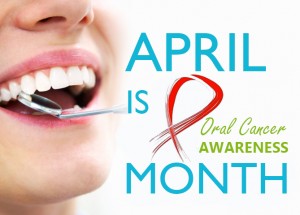 Oral cancer often occurs on the tongue, gums, floor of the mouth, and tonsils. Oropharyngeal cancer affects the oropharynx, or the throat in the back of the mouth.
Oral cancer often occurs on the tongue, gums, floor of the mouth, and tonsils. Oropharyngeal cancer affects the oropharynx, or the throat in the back of the mouth.
Risk Factors:
Smoking and tobacco use are the major risk factors of oral cancer. The combination of heavy alcohol consumption with tobacco use makes the development of oral cancer 15 times more likely than those who abstain.
Age is also often considered a risk factor since it occurs most frequently in people over 40, however the fastest growing segment of the population that is being diagnosed with oral cancer are nonsmokers under the age of 50.
Certain strands of the human papilloma virus (HPV) can cause various types of oral cancer, however, out of 200 strands of HPV, only nine are strongly associated with the risk for cancer.
Signs and Symptoms:
The sensitivity of your mouth makes oral cancer difficult to detect in its early stages. Generally, you want to look for white or red patches in your mouth, or a small ulcer similar to a canker sore. If an abrasion in your mouth doesn’t heal after 14 days, it is best to see a dentist for a screening.
Common symptoms of oral cancer or pre-cancerous cells include:
•A change in the way the teeth fit together
•A color change in the oral tissues
•A tiny white or red spot/sore anywhere in the mouth
•Any sore that bleeds easily or refuses to heal
•Difficulty chewing, swallowing, speaking or moving the jaw or tongue
•Lumps, thickenings, rough spots, or crusty areas
•Pain, tenderness, or numbness anywhere in the mouth or on the lips
Early Detection is Key:
Early discovery of mouth cancer can increase life spans, reduce the number of treatments, and greatly increase quality of life post-diagnosis. That is why we provide oral cancer screenings at each of your hygiene visits. If you are experiencing any of the symptoms mentioned above, please make sure you let your hygienist and Dr. Tingzon know.
